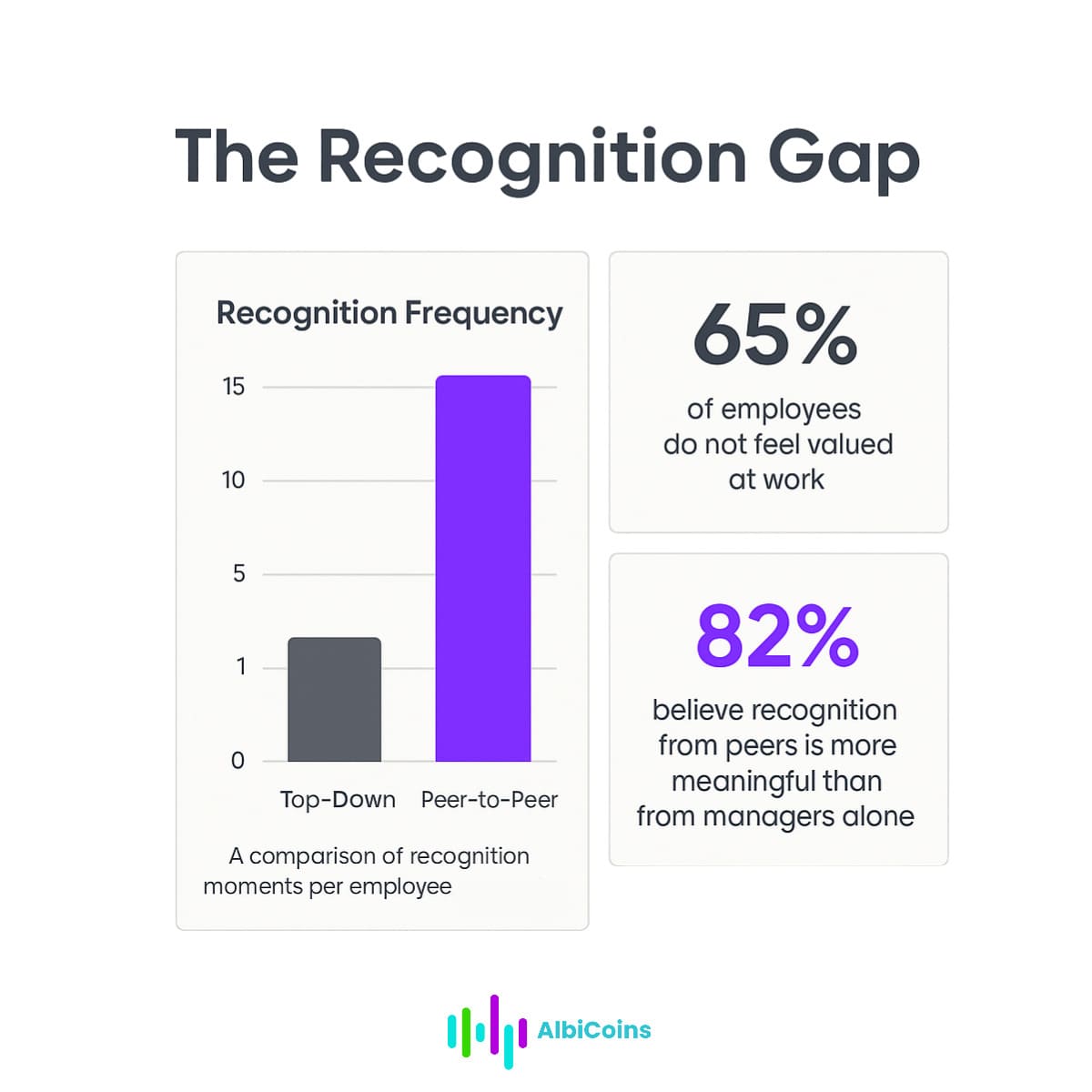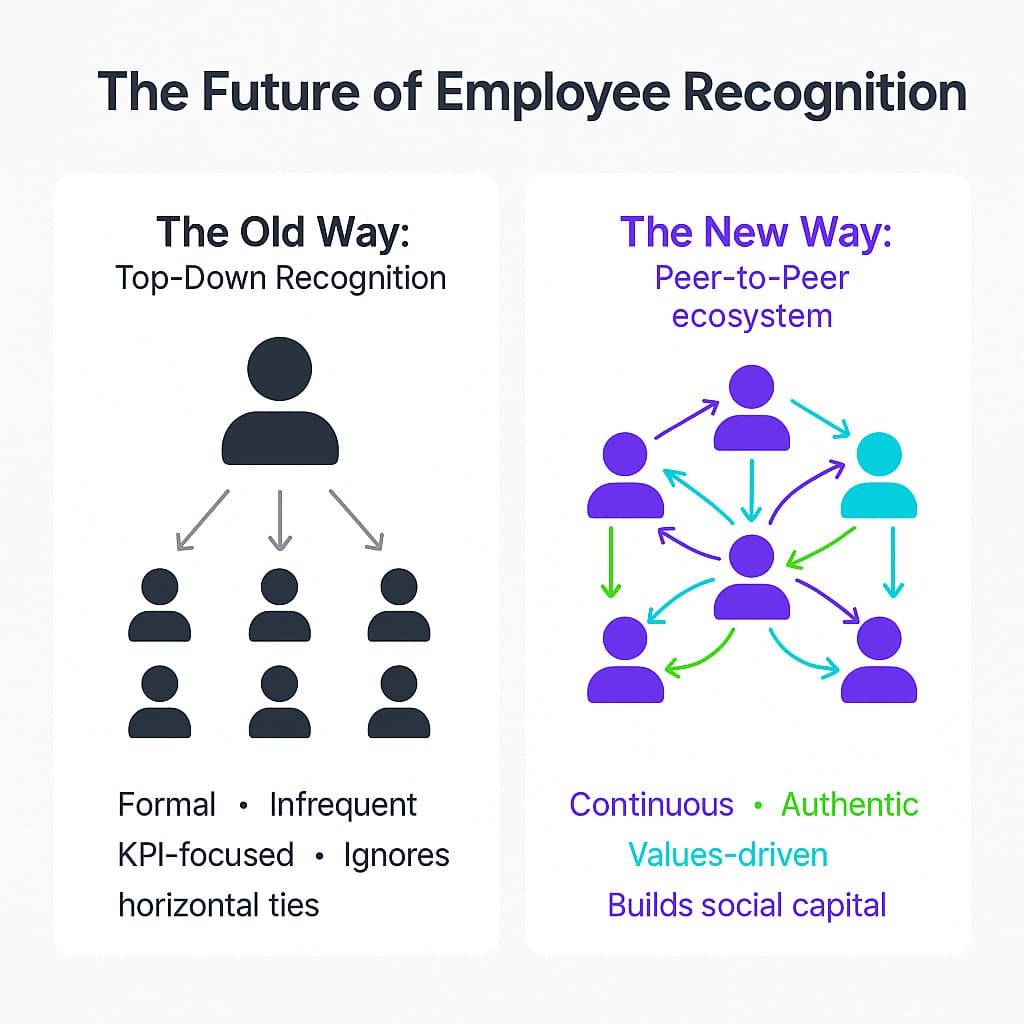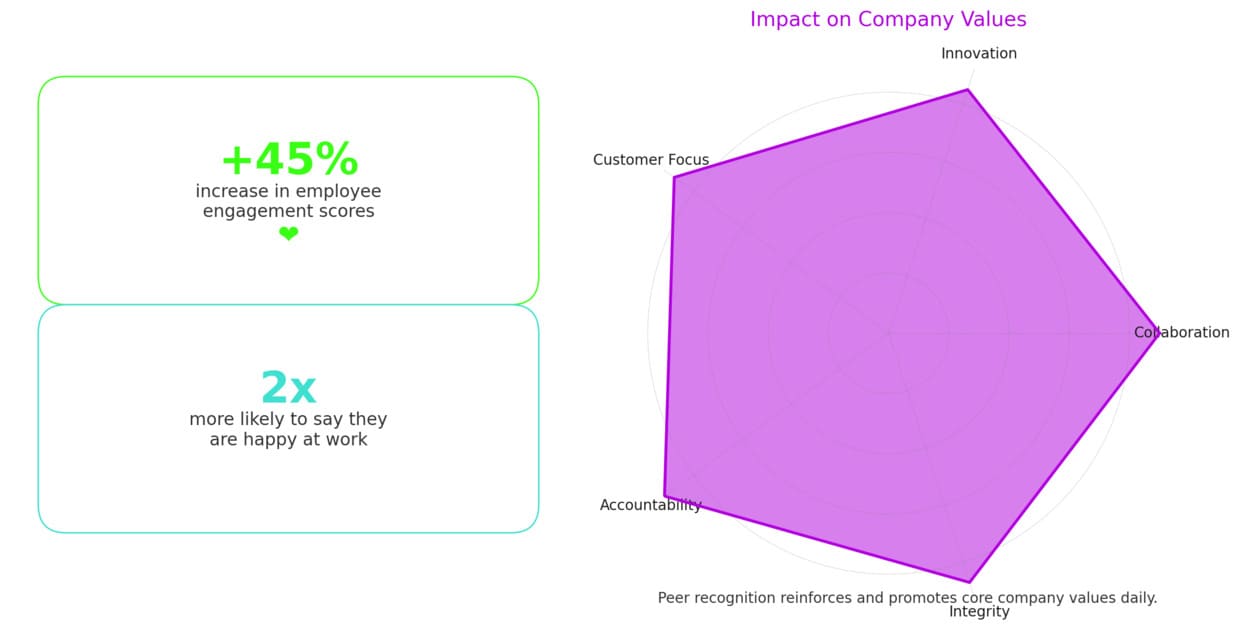More Than Fika: How to Build a Digital Ecosystem of Trust in a Hybrid Team
- Social Capital is a Measurable Asset, Not a “Soft Factor”
- Why Traditional Recognition Methods No Longer Work
- What This Looks Like in Practice: Figures and Scenarios
- AlbiCoins: A Motivation Platform Built on Trust
- Conclusion: Building a Culture of Recognition is an Investment with a Fast Return
In the Nordic work culture, we have always taken pride in our ability to build strong relationships founded on trust. The informal coffee break, or Fika, has never been just a pause in the day; it’s a vital ritual that weaves the social fabric of our organizations. However, in today’s hybrid world, with part of the team in the Oslo office and another part working from home in Stockholm, we face a quiet but serious challenge: that fabric is starting to wear thin.
Let’s consider a typical team. There’s Lina, a brilliant specialist whose results are always visible in KPIs and reports. And then there’s Markus. Markus is the source of human energy on the team. He not only excels at his tasks but also finds the time to help a new employee get settled (informal upskilling), suggests an idea to optimize a workflow that saves everyone time (the spirit of an internal startup), and connects two departments to solve a complex problem (cross-team collaboration).
In a traditional office setting, Markus’s contributions would have been visible. But in a hybrid format, his actions—which are critical for innovation and team spirit—become nearly invisible to formal evaluation systems. This creates a real risk of burnout and of losing an employee who is, in fact, the glue holding the team together.
Social Capital is a Measurable Asset, Not a “Soft Factor”
We intuitively understand the value of people like Markus, but research confirms it with data. According to Gallup, employees who have a best friend at work are seven times more engaged in their tasks. And according to SHRM, friendships at work can increase employee retention by 25%.

For the Nordic management model, which is built on a high degree of autonomy and trust, these figures are of colossal importance. When informal connections weaken, our model of “freedom and responsibility” begins to falter, giving way to isolation and misunderstanding.
Why Traditional Recognition Methods No Longer Work

Many companies are trying to solve this problem, but they often choose tools that contradict the very essence of our culture:
- Individualistic Leaderboards. Attempts to implement gamification through competitive mechanics often fail because they clash with a culture of teamwork and principles that value collective success over individual showmanship, creating unnecessary internal competition where collaboration should be.
- Top-Down-Only Recognition. A “thank you” from a manager is important, but in our flat hierarchies, it is recognition from a peer that often serves as the ultimate validation of one’s contribution.
- The Systemic Invisibility of “Quiet Heroes.” The contributions of people like Markus, who operate at the intersection of roles and job descriptions, are systematically overlooked, which inevitably leads to their demotivation.
What This Looks Like in Practice: Figures and Scenarios
To be concrete, let’s explore what implementing a culture of recognition can look like in numbers. These are hypothetical scenarios, but they are based on market benchmarks.
Scenario 1: Engagement and Activity
Imagine a tech company with 150 employees that launches a peer-to-peer recognition platform.
- After 30 days: 85% of employees have already logged in and have either sent or received at least one “coin.” This proves the tool is not “just another program that everyone ignores.”
- In the first quarter: Over 1,200 moments of recognition are shared. Analysis shows that 40% of these are cross-functional, meaning employees are thanking colleagues from other departments. This is a direct indicator of strengthening horizontal ties.
- The most common reason for recognition: “Help with a difficult task outside of my direct responsibilities.” This signals a growing culture of mutual support.
Scenario 2: The Impact on HR Metrics
Consider a consulting firm that measures its eNPS (Employee Net Promoter Score) every six months.
- Before implementation: The eNPS was +20. Employees were generally satisfied but didn’t feel particularly valued.
- Six months after launching AlbiCoins: The eNPS score rises to +35. In the survey comments, employees more frequently mention a “great team atmosphere” and “the feeling that my contribution is noticed.”
- Correlation with retention: An analysis shows that in the teams with the highest platform activity (the top 20%), the annual employee turnover was 50% lower than in the teams with the lowest activity.

AlbiCoins: A Motivation Platform Built on Trust
It is precisely to achieve these kinds of results that next-generation platforms like AlbiCoins were created. It is a customizable (white-label) SaaS platform designed to build a holistic culture of recognition in modern companies.
This is not just a tool, but a digital environment that makes all valuable contributions visible. The platform allows employees to not only send each other “coins” as a sign of gratitude for help (Peer-to-peer Recognition) but also to:
- Participate in team project contests where results are tied to company values.
- Receive rewards for learning and skill development (Upskill & Reskill Reward).
- Support and propose innovative ideas through internal startup modules.
While the platform’s interface is intuitive and engaging for employees (Gamified UX), its philosophy is one of motivation based on trust, not control. 6The “coins” earned can be converted into personalized rewards that are important to the employee, whether it’s further training, well-being products, or contributions to social initiatives (impact rewards).
Conclusion: Building a Culture of Recognition is an Investment with a Fast Return
Let’s return to the main idea: a strong culture is a competitive advantage. When 85% of your employees are actively engaged in a process of mutual recognition, and their loyalty score increases by 15 points in six months, it ceases to be a “soft factor” and becomes a measurable business result.
Modern platforms can integrate with your existing HR tools and allow you to begin this transformation within 30 days, making it possible to see a measurable impact on engagement and retention in just six months. By creating an environment where everyone feels seen and valued, we build not just effective companies, but truly great ones.
References:
- Lack of Recognition at the Societal Level Heightens Turnover Considerations among Nordic Eldercare Workers: A Quantitative Analysis
- Finding Recognition in Scandinavian Gig Work: Experiences of Foodora Riders
- The Effect of Peer‑to‑Peer Recognition Systems on Helping Behavior
- Academic Research in Action: Enhancing Team and P2P Recognition — Two Practical Studies for Better Recognition Program Design
- Employee Recognition, Task Performance, and Organizational Citizenship Behavior


